2. C. Thiel, J. Schmidt, A. Van Zyl, and E. Schmid, Cost and well-to-wheel implications of the vehicle fleet CO
2 emission regulation in the European Union,
Transp. Res. Part A Policy Pract. 63 (2014) 25ŌĆō42.
https://doi.org/10.1016/j.tra.2014.02.018
[CROSSREF] 3. C.W. Ji, I. Choi, Y. D. Kim, and Y. D. Park, Study on coating melting behavior on weld growth mechanism for Al-Si coated hot-stamped boron steels in resistance spot welding,
J. Korean Inst. Met. Mater. 52 (2014) 931ŌĆō941.
https://doi.org/10.3365/KJMM.2014.52.11.931
[CROSSREF] 4. H. Jun, J. Kim, J. Cheon, Y. Kim, Y. Kim, and C. Ji, The effect of pre-welding on nugget growth behavior and weldability for the resistance spot welding of A 6014- T4 alloy,
J. Weld. Join. 38 (2020) 203ŌĆō210.
https://doi.org/10.5781/JWJ.2020.38.2.11
[CROSSREF] 5. J. Kong and C. Kang, Expulsion of electric resistance spot welding in advanced high strength steels, J. Korean Weld. Join. Soc. 29 (2011) 646ŌĆō652.
6. J. Kim, H. Jun, J. Cheon, Y. Kim, and C. Ji, Effect of the melting behavior of the coating layer on weldability in the bolt projection resistance welding of al-si coated hot-stamped boron steel,
J. Weld. Join. 38 (2020) 33ŌĆō40.
[CROSSREF] [PDF] 8. J. Kong and C. Kang, Expulsion of electric resistance spot welding in advanced high strength steels, J. Korean Weld. Join. Soc. 29 (2011) 646ŌĆō652.
10. O. Sherepenko, N. Mitzschke, and S. J├╝ttner, Micro- structural Imperfections in the HAZ of Resistance Spot Welded Ultra High Strength Steel 22MnB5 and Their Impact on Joint Fracture, 5th International Conference on Steels in Cars and Trucks, Amsterdam, Netherlands. (2017)
11. Y. Hwang, C. W. Lee, G. Y. Shin, J. H. Yoo, and M. Choi, Study of the corrosion behaviour, liquid metal embrittlement and resistance spot weldability of galvannealed hot stamping steel,
J. Korean Inst. Met. Mater. 57 (2019) 193ŌĆō201.
https://doi.org/10.3365/KJMM.2019.57.3.193
[CROSSREF] [PDF] 15. J. W. Kim, S. P. Murugan, J. H. Yoo, R. Ashiri, and Y. D. Park, Enhancing nugget size and weldable current range of ultra-high-strength steel using multi-pulse resistance spot welding,
Sci. Technol. Weld. Join. 25(3) (2020) 235ŌĆō242.
[CROSSREF] 18. Y. Ma, A. Takikawa, J. Nakanishi, K. Doira, T. Shimizu, Y. Lu, and N. Ma, Measurement of local material properties and failure analysis of resistance spot welds of advanced high-strength steel sheets,
Mater. Des. 201 (2021) 109505
https://doi.org/10.1016/j.matdes.2021.109505
[CROSSREF] 19. M. Pouranvari, H. R. Asgari, S.M. Mosavizadch, P. H. Marashi, and M. Goodarzi, Effect of weld nugget size on overload failure mode of resistance spot welds,
Sci. Technol. Weld. Join. 12 (2007) 217ŌĆō225.
https://doi.org/10.1179/174329307X164409
[CROSSREF] 23. H. S. Choi, G. H. Park, W. S. Lim, and B. M. Kim, Evaluation of weldability for resistance spot welded single-lap joint between GA780DP and hot-stamped 22MnB5 steel sheets,
J. Mech. Sci. Technol. 25 (2011) 1543ŌĆō1550.
https://doi.org/10.1007/s12206-011-0408-x
[CROSSREF] [PDF] 24. V. Vijayan, S. P. Murugan, S. G. Son, and Y. D. Park, Shrinkage Void Formation in Resistance Spot Welds:Its Effect on Advanced High-Strength-Steel Weld Strength and Failure Modes,
J. Mater. Eng. Perform. 28 (2019) 7514ŌĆō7526.
https://doi.org/10.1007/s11665-019-04465-6
[CROSSREF] [PDF] 27. L. Mejlbro, The complete solution of Fick's second law of diffusion with time-dependent diffusion coefficient and surface concentration, Durability of concrete in saline environment. (1996) 127ŌĆō158.
29. J. Maki, Properties of Aluminum-coated Steels for Hot-forming, Nippon Steel Tech. Rep. 88 (2003) 16ŌĆō21.
31. Z. X. Gui, W. K. Liang, and Y. S. Zhang, Enhancing ductility of the Al-Si coating on hot stamping steel by controlling the Fe-Al phase transformation during autenitization,
Sci. China Technol. Sci. 57 (2014) 1785ŌĆō1793.
https://doi.org/10.1007/s11431-014-5576-3
[CROSSREF] [PDF] 33. F. Jenner, M. E. Walter, R. Mohan Iyengar, and R. Hughes, Evolution of phases, microstructure, and surface roughness during heat treatment of aluminized low carbon steel,
Metall. Mater. Trans. A Phys. Metall. Mater. Sci. 41 (2010) 1554ŌĆō1563.
https://doi.org/10.1007/s11661-009-0105-x
[CROSSREF] [PDF] 35. J. Y. Cheon, V. Vijayan, S. Murgun, Y. D. Park, J. H. Kim, J. Y. Yu, and C. Ji, Optimization of pulsed current in resistance spot welding of Zn-coated hot-stamped boron steels,
J. Mech. Sci. Technol. 33 (2019) 1615ŌĆō1621.
https://doi.org/10.1007/s12206-019-0313-2
[CROSSREF] [PDF] 36. Y. S. Kim, Y. S. Kim, K. C. Park, J. B. Nam, T. J. Kim, and B. H. Lee, Welding and Bonding Technology for Manufacturing High Strength Automotive Body, Trans. Mater. Process. 26 (2017) 246ŌĆō259.
37. O. Sherepenko, P. Kazemi, M. Rosemann, T. Wilke, S. Halle, and S. J├╝ttner, Transient Softening at the Fusion Boundary of Resistance Spot Welds:A Phase Field Simulation and Experimental Investigations for Al-Si- coated 22MnB5,
Met. 10 (2020) 10
https://doi.org/10.3390/met10010010
[CROSSREF] 39. I. Choi, J. Park, J. W. Kim, M. Kang, D. C. Kim, J .K. Kim, and Y. D Park, A study on tensile shear characteristics for weld-bonded 1.2GPa grade TRIP steels with changes in nugget diameter for automotive body application,
J. Weld. Join. 33 (2015) 69ŌĆō77.
https://doi.org/10.5781/JWJ.2015.33.2.69
[CROSSREF]

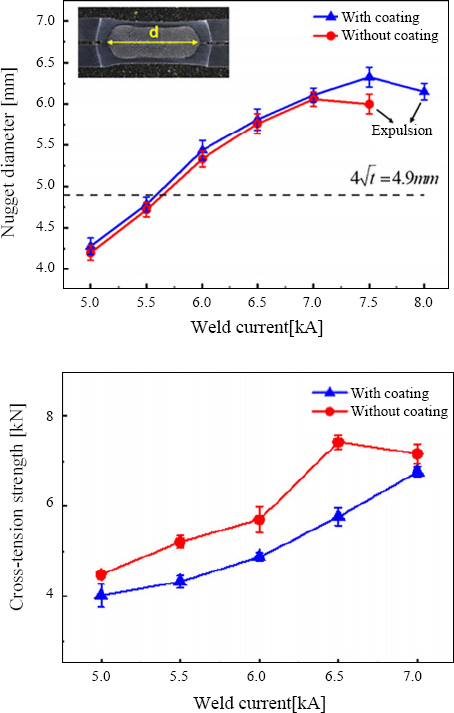
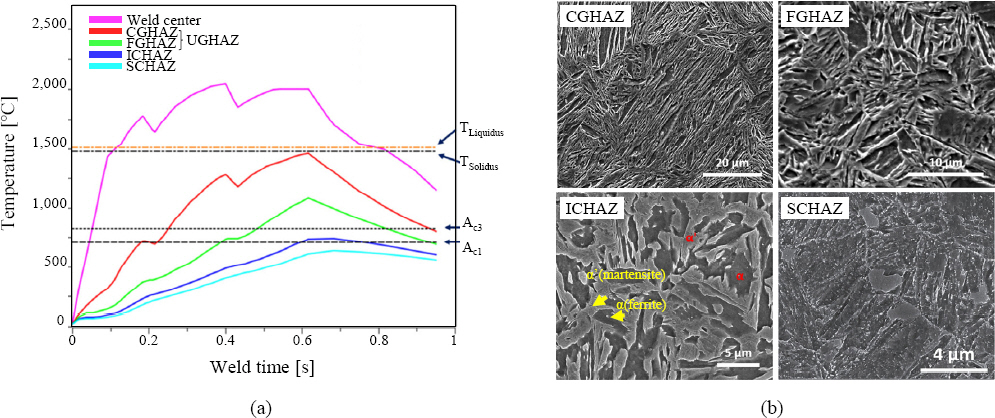
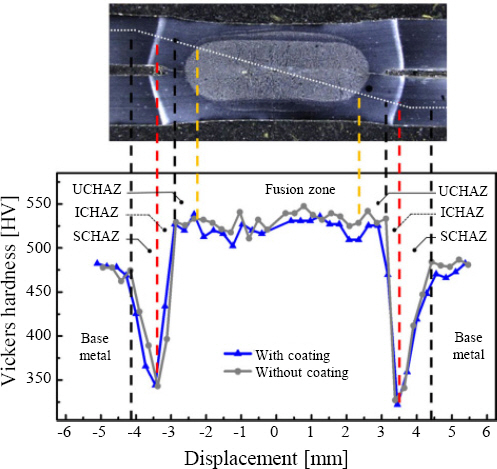

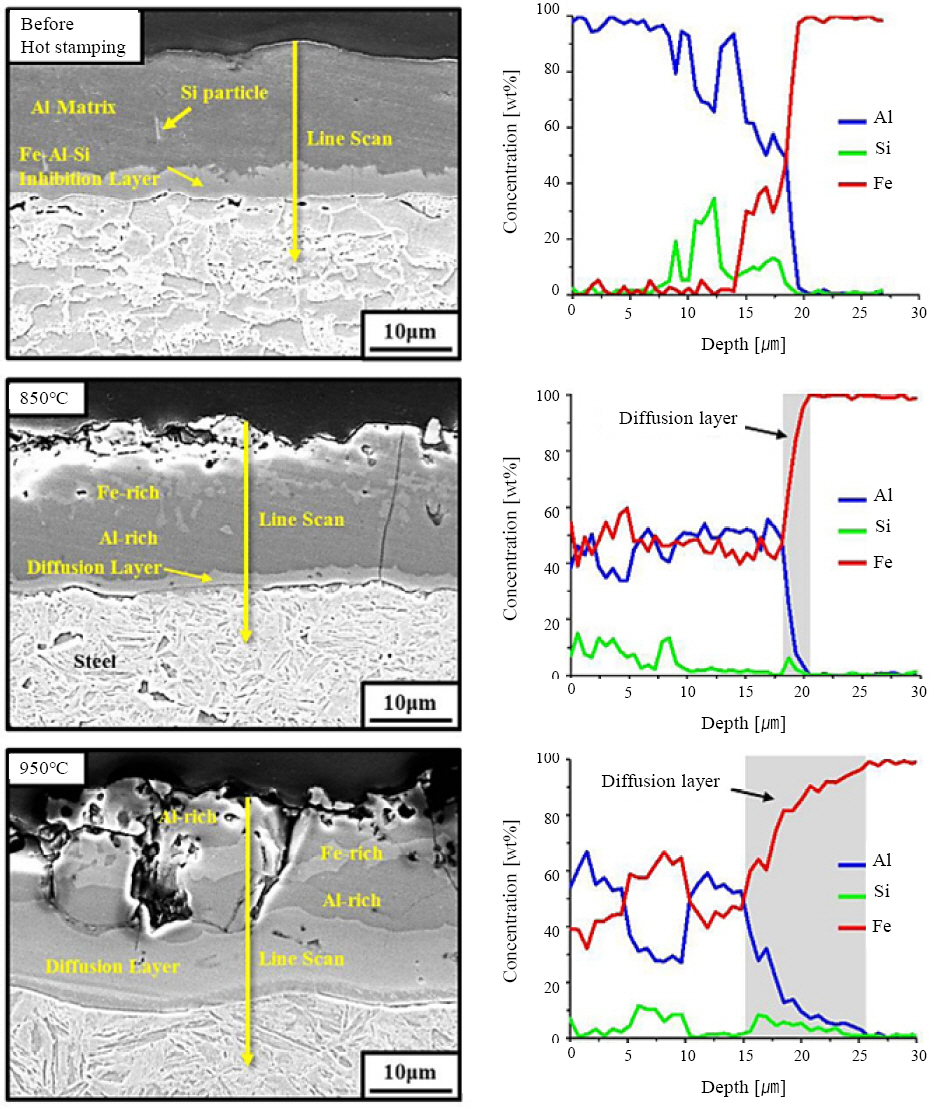



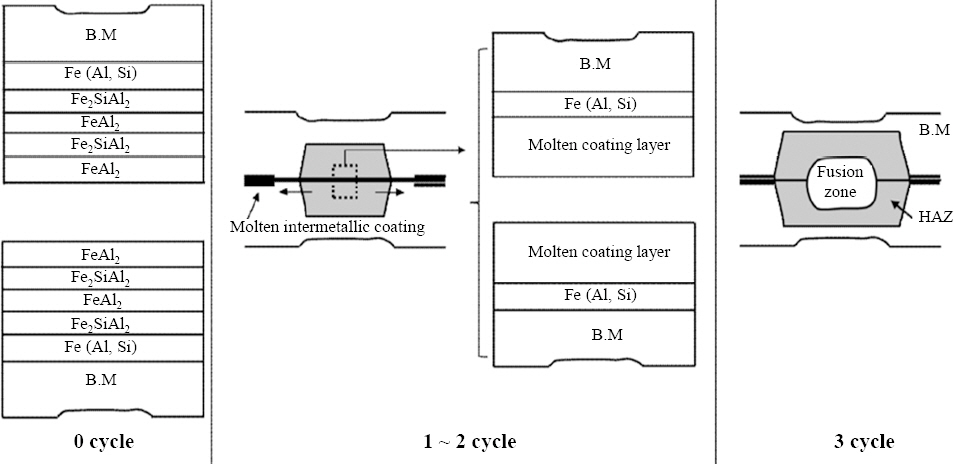




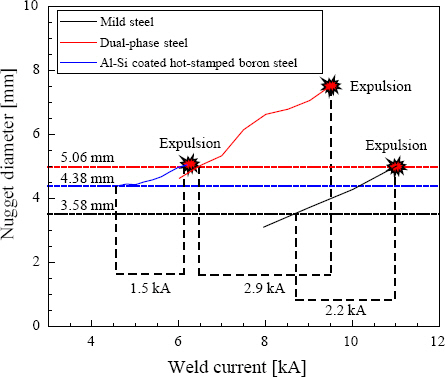
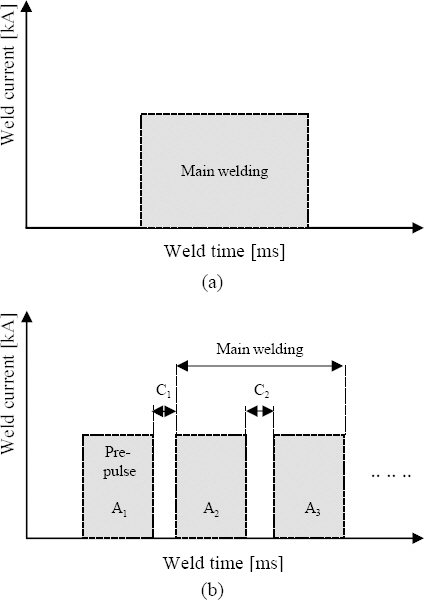
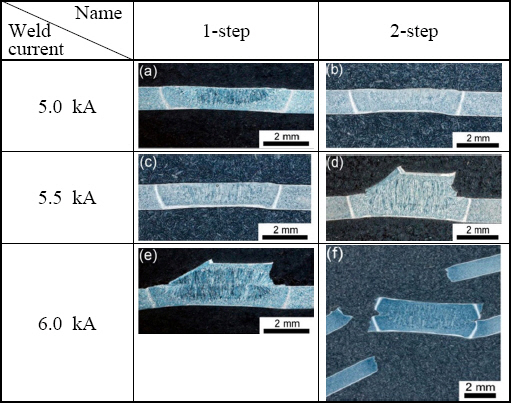
 PDF Links
PDF Links PubReader
PubReader ePub Link
ePub Link Full text via DOI
Full text via DOI Download Citation
Download Citation Print
Print



